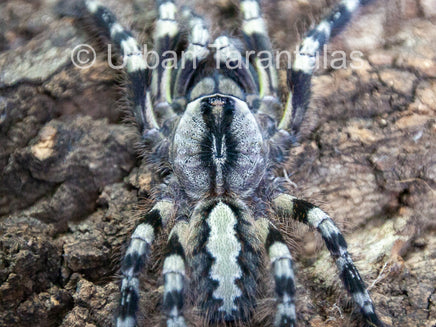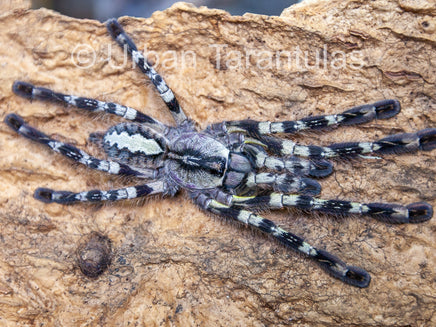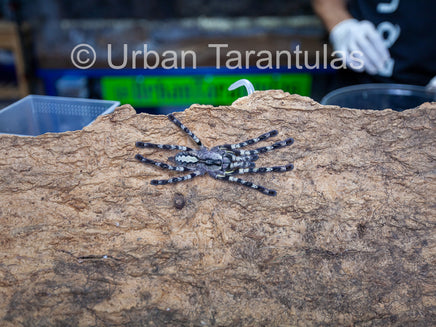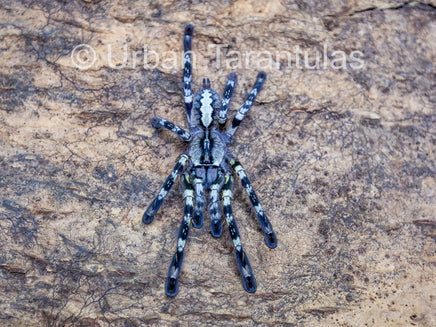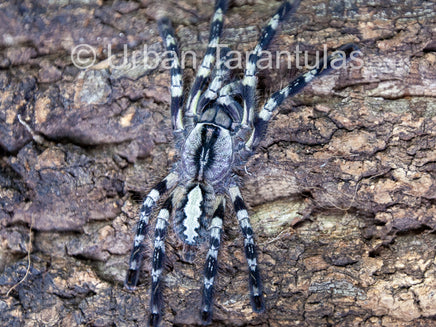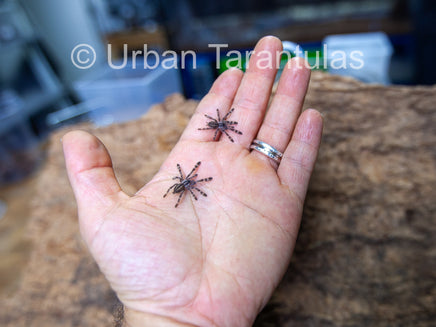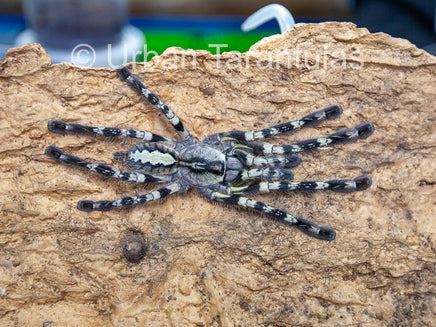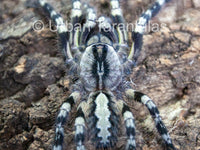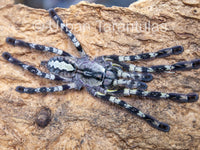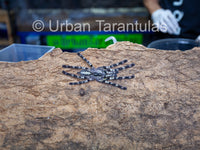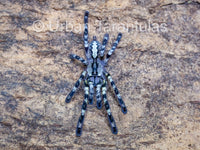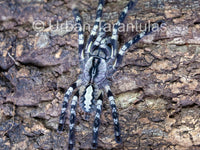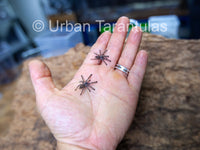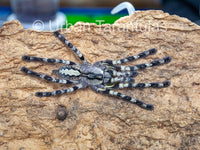🕷️ Meet the Posh and Regal: Poecilotheria regalis 🕷️
Welcome to the world of the Poecilotheria regalis, affectionately known as the "Indian Ornamental Tarantula." This is not just a spider; it's a work of art with legs! Imagine the elegance of a Victorian-era ballroom gown, now shrink it down and give it eight legs – voilà, you've got the Poecilotheria regalis. Its striking black and white patterns are reminiscent of a high-end designer outfit, making it a must-have for any tarantula aficionado.
🌡️ Care and Husbandry: Living Like Royalty 🌡️
Temperature: These regal beauties enjoy a warm and cozy environment, thriving in temperatures ranging from 70°F to 85°F. Humidity: A bit on the moist side, around 60-70%, just enough to keep their royal skin hydrated.
Housing: The Poecilotheria regalis is an arboreal species – think of them as the spider equivalent of tree-huggers. They love vertical space to climb and showcase their stunning patterns. A tall enclosure with some bark or branches will make them feel right at home.
🔍 Facts and Information:
- Latin/Scientific Name: Poecilotheria regalis
- Common Name: Indian Ornamental Tarantula
- Type: Arboreal
- Category: Old World
- Locale: Primarily found in India
- Size: They can reach up to 7-9 inches in leg span, with females being larger.
- Urtication Hairs: No urticating hairs here. They're too posh for that!
- Stridulation: They do not produce stridulation sounds.
- Growth Rate: Moderately fast. They don't like to keep their admirers waiting too long.
- Life Expectancy: Females can live up to 12 years, while males have a shorter lifespan.
- Recommended Experience Level: Due to their speed and potential for defensive bites, they're best suited for intermediate keepers.
Stay Connected
- Instagram: Follow my Instagram, I'm most active here.
- YouTube: For care and education videos, check out my YouTube channel.
- Facebook: Over here I have all my reviews.
- TikTok: Visit my TikTok for additional content.
Safety Disclaimer
Experiencing a tarantula bite is an extremely rare occurrence, and it's important to note that there have been no recorded fatalities due to a tarantula bite. The venom potency varies across species, with Old World tarantulas generally having stronger venom than their New World counterparts. Within the Old World category, the Poecilotheria genus is known for having particularly potent venom.
It's crucial to approach tarantulas with respect and understanding. If you happen to get bitten, which is unlikely, the key is to stay calm. In most cases, the discomfort is superficial and subsides within a few minutes to a few hours. However, bites from species with more potent venom may result in symptoms lasting up to a week. Remember, larger tarantulas tend to have more venom than smaller ones.
Please be aware that I cannot assume responsibility for bites. Tarantula handling should be done at your own risk. In my 11 years of experience with these creatures, I have only been bitten once, by a species with highly potent venom. While the experience was painful, the symptoms had completely disappeared after a week.
Handle tarantulas responsibly, and always prioritize your safety and the well-being of the tarantula.
